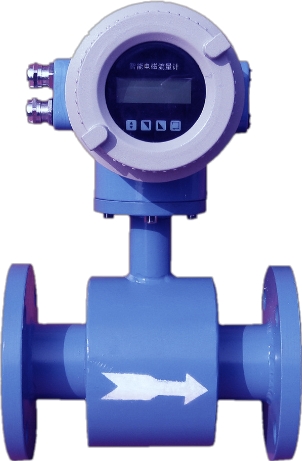With the advancement of technology and production needs, metrology technology has been rapidly developed, especially the new generation of intelligent electromagnetic flowmeters. After decades of application and technology updates, the scope of use is extremely wide. The following is a detailed analysis of the electromagnetic flowmeters used by Hexun Flowmeter's technology Xiaobian for everyone, for your reference. 1) The sensor structure of the electromagnetic flowmeter is simple, there are no moving parts in the measuring tube, and there are no throttling parts that impede the flow of fluid. Therefore, when the fluid passes through the flow meter, it will not cause any additional pressure loss, and is one of the lowest energy consumption flow meters in the flow meter. 2) The flow rate of fouling medium, corrosive medium and suspension liquid-solid two-phase flow can be measured. This is due to the unobstructed flow components inside the instrument measuring tube. The measuring tube lining and electrodes are in contact with the measured fluid. The material can be selected according to the nature of the measured fluid. For example, with polytrifluoroethylene or PTFE as the inner lining, it can measure various corrosive media such as acids, alkalis, and salts; wear-resistant rubber as the inner lining is particularly suitable for measuring wear with solid particles. Larger slurry, cement slurry, etc. Liquid-solid two-phase flow, and various suspended liquids with fiber liquids and pulps. 3) The electromagnetic flowmeter is a kind of volume flow measuring instrument. In the measurement process, it is not affected by the measured temperature, viscosity, density of the medium (in a certain range). Therefore, after the electromagnetic flow meter is calibrated by water, it can be used to measure the flow of other conductive liquids. 4) The output of the electromagnetic flow meter is only proportional to the average flow velocity of the measured medium, but is independent of the flow state (laminar flow or turbulent flow) under symmetrical distribution. Therefore, the range of the electromagnetic flowmeter is very wide, with a measuring range of up to 100:1, and some even reach a flowable range of 1000:1. 5) The electromagnetic flowmeter has no mechanical inertia and reacts sensitively. It can measure the instantaneous pulsating flow, and can also measure the flow in both positive and negative directions. 6) The scope of the industrial electromagnetic flowmeter is very wide, from a few millimeters to several meters, and the domestic real-calibration equipment with a diameter of 3m has laid a foundation for the application and development of electromagnetic flowmeters. The main drawbacks of electromagnetic flowmeters are still as follows. 1) It cannot be used to measure gases, steam, and liquids containing large amounts of gas. 2) It cannot be used to measure liquid media with very low electrical conductivity. For media such as petroleum products or organic solvents, electromagnetic flowmeters are still powerless. 3) Electromagnetic flowmeters for general industrial use cannot be used for measuring high-temperature media due to the restrictions of measuring tube lining materials and electrical insulating materials; if they have not been specially treated, they cannot be used for measurement of low-temperature medium to prevent condensation outside the measuring tube. (frosting) destroys insulation. 4) The electromagnetic flowmeter is susceptible to external electromagnetic interference. Flowmeters - Shaanxi Shunan and Shunda flowmeters for sewage / gas / methane / steam / oxygen / compressed air / bitumen / heavy oil / crude oil / acid and other media flow measurement [Production Capacity] 10,000 sets of annual production capacity [After-sales commitment] Three months from the date of delivery of the product, three bags of non-human damage, the company is responsible for repair, replacement, return, three-period period to provide paid life-long maintenance services. Selective Laser Sintering - Sls Stereo Light Curing Molding - Sla
It mainly uses photosensitive resin as a raw material, and utilizes the characteristic that liquid photosensitive resin will cure quickly under ultraviolet laser beam irradiation. The photosensitive resin is generally liquid, and it immediately initiates a polymerization reaction and completes curing when irradiated with a certain wavelength of ultraviolet light (250 nm to 400 nm). SLA focuses on the surface of the light-curing material by focusing ultraviolet light of a specific wavelength and intensity to solidify it sequentially from point to line and from line to surface, thereby completing the drawing of a layered cross-section.
Selective Laser Sintering - Sls,Sls 3D Printing Service,Laser Sintering 3D Printing,Selective Laser Printing Ningbo Rongna Technology Co.,Ltd , https://www.machiningcustom.com

Electromagnetic flowmeter advantages and insufficiency analysis
